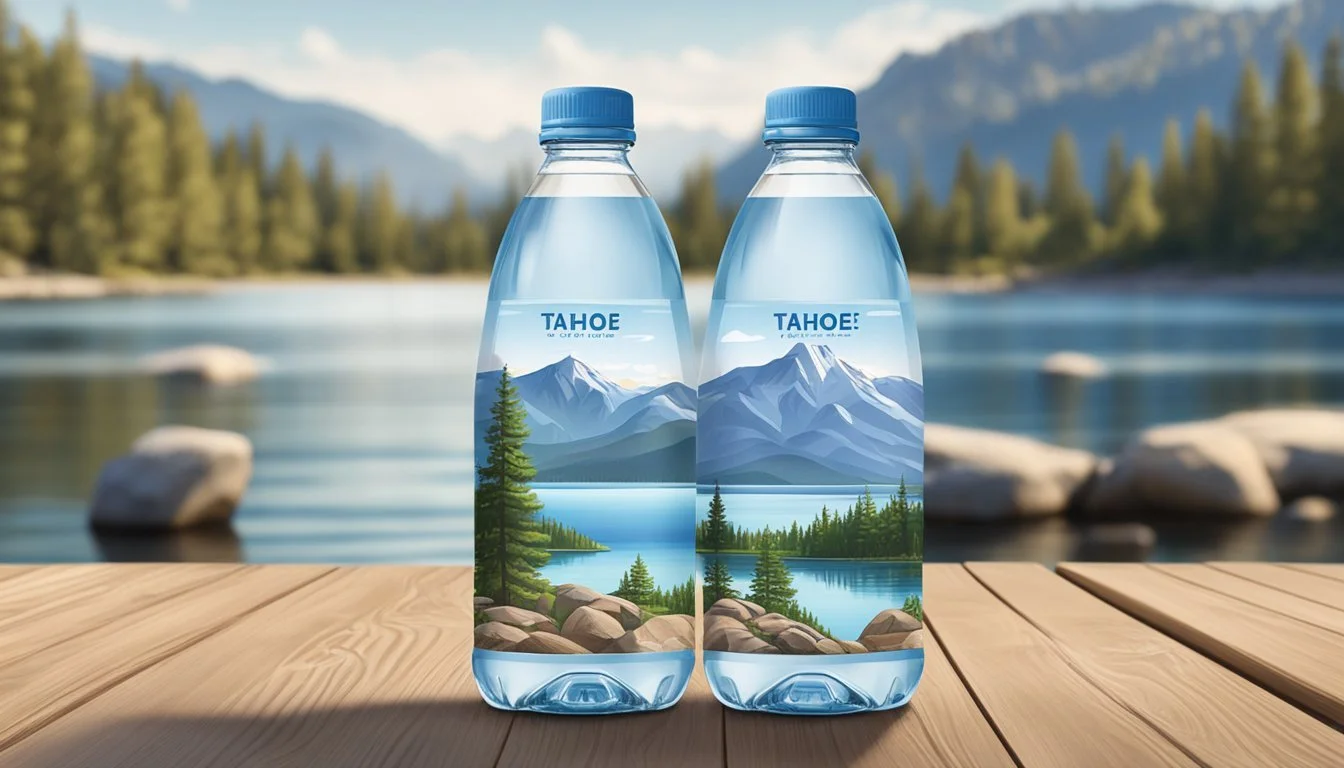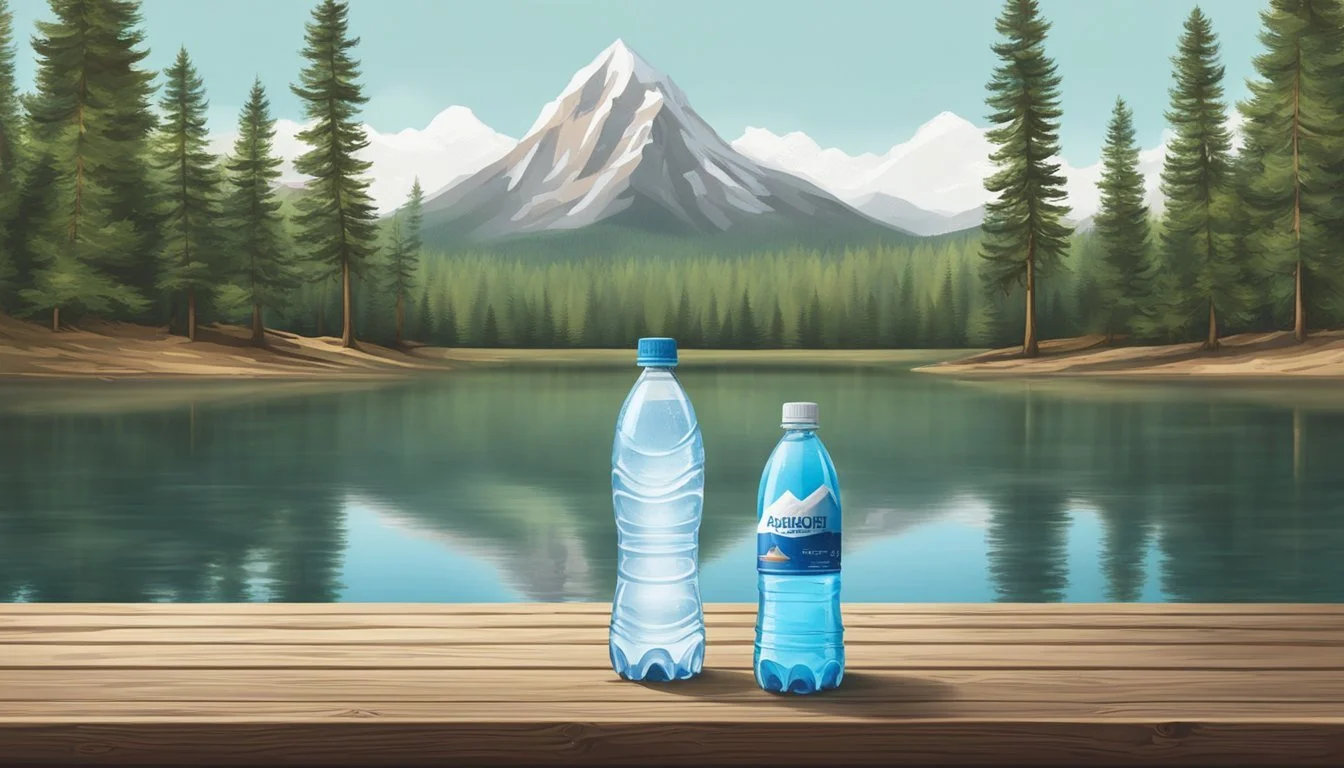Tahoe vs. Big Win
Which Bottled Water is Better for You?
Choosing between Tahoe and Big Win bottled water can significantly impact your hydration strategy. Each brand offers unique qualities that cater to different preferences and needs. Tahoe stands out for its natural spring water origin, boasting minimal filtration and a rich mineral content that appeals to those seeking a more natural hydration experience. On the other hand, Big Win offers purified water that is processed to remove impurities, providing a clean and crisp taste appreciated by many.
Understanding the differences in sourcing and processing helps consumers make informed choices. Tahoe's water comes from natural springs, making it a preferable option for those who value water's natural mineral content. Conversely, Big Win's purification process ensures a consistent taste and safety, appealing to consumers who prioritize purity in their drinking water.
For those focusing on environmental impact, packaging also plays a crucial role. While both brands aim to provide quality hydration, their packaging choices may influence environmentally-conscious consumers. Ultimately, the choice between Tahoe and Big Win depends on personal preference, specific hydration needs, and values regarding water sourcing and packaging.
Understanding Bottled Water
Bottled water comes in various types, each with its distinct sourcing, purification methods, and quality standards. It's crucial to comprehend these variations to make informed choices.
The Essentials of Water Quality
Water quality is a critical aspect of choosing bottled water. Standards for safe drinking water are established by the Food and Drug Administration (FDA). Purity levels are ensured through rigorous filtration processes such as reverse osmosis, which removes heavy metals and contaminants.
Mineral content also plays a role in water quality. Electrolytes like sodium, potassium, and magnesium are important for hydration. Water brands may highlight levels of these minerals on their labels to attract health-conscious consumers.
Tap Water vs. Bottled Water
Tap water and bottled water differ mainly in convenience and perception of quality. Tap water, regulated by the Environmental Protection Agency (EPA), is subject to stringent safety standards. Many people use in-home filtration systems to further purify it.
Bottled water is often preferred for its portability and perceived purity. Brands like Big Win offer purified water that promises a clean taste without heavy metals or contaminants. However, environmental concerns arise due to plastic waste associated with bottled water consumption.
Natural Spring Water vs. Purified Water
Natural spring water is sourced from underground springs and is minimally processed. It retains natural minerals but may undergo filtration to ensure safety. Brands emphasize the water source to highlight its natural origins, like Arrowhead and Tahoe.
Purified water undergoes advanced purification techniques like reverse osmosis. This process ensures extremely high purity levels by removing almost all dissolved solids. While purified water lacks the mineral content of spring water, it appeals to those seeking the highest level of purity.
Comparative Analysis of Tahoe and Big Win
When evaluating Tahoe and Big Win bottled water, several factors come into play such as taste profiles, mineral content, health benefits, production processes, and packaging sustainability. This analysis will help consumers make an educated choice based on these aspects.
Taste Profiles: Clean and Crisp or Bland and Flat?
Tahoe water boasts a clean and crisp flavor, owing to its pristine artesian aquifer source in the Sierra Nevada Mountains. Its naturally high pH and mineral content enrich the taste, making it a favorite among those who prefer a fresh, natural flavor.
In contrast, Big Win tends to have a blander and flatter taste profile. This is often attributed to its standard filtration process, which can strip away some natural minerals and flavors. Consumers who prioritize a more neutral taste might still prefer Big Win for its simplicity.
Mineral Content and Health Benefits
Tahoe water is rich in natural minerals derived from its artesian source. These minerals not only enhance the taste but also provide health benefits, such as improved hydration and electrolyte balance. The naturally high pH further adds to its appeal, catering to those who seek health-conscious options.
Big Win, on the other hand, typically features fewer minerals due to its extensive filtration. While it still meets hydration needs, the health benefits related to mineral content may not be as pronounced. This makes Tahoe a preferable choice for those looking for added nutritional value from their bottled water.
Production and Filtration Processes
Tahoe prides itself on minimal intervention in its production process. The water is bottled in small batches to maintain its natural minerals and high pH levels. Sustainability is a core part of Tahoe's identity, as they ensure their production is eco-friendly.
Big Win employs a standard filtration process which often includes methods such as reverse osmosis or activated carbon filtering. While this ensures the water is clean and safe to drink, it also strips away many minerals, affecting both taste and health benefits. Their focus is more on mass production and consistent quality.
Packaging: Sustainability and Convenience
Tahoe places a significant emphasis on sustainable packaging. Their bottles are made from recyclable materials and are designed to reduce environmental impact. This focus on eco-friendly packaging aligns with the brand's overall ethos of sustainability.
Big Win provides convenience with its widely available and easily recognizable packaging. While the materials are often recyclable, the primary goal is consumer accessibility and practicality rather than sustainability. Those looking for environmentally friendly options might lean towards Tahoe.
In summary, while both brands offer reliable hydration, the choice between Tahoe and Big Win ultimately depends on individual preferences for taste, mineral content, production practices, and packaging sustainability.
Branding and Market Presence
Tahoe and Big Win represent two distinct segments in the bottled water market. Tahoe targets the premium-end, while Big Win appeals to budget-conscious consumers.
Price and Affordability: Premium vs. Budget-Friendly
Tahoe positions itself as a premium brand. It typically retails at higher price points, with a 750ml bottle ranging from $2.50 to $3.00. This pricing reflects its emphasis on purity and luxury.
Big Win, on the other hand, markets itself as a budget-friendly option. Its price range is more accessible, making it attractive for cost-conscious consumers. A similar 750ml bottle of Big Win might cost around $1.00 to $1.50, catering to those looking for affordability without sacrificing basic quality.
Distribution and Availability in Stores
Tahoe targets premium grocery stores and select convenience stores across the United States. Its distribution focuses on creating a niche presence among discerning customers who value high-end products. Major supermarkets are selective with Tahoe, ensuring it is placed in well-trafficked and high-end sections.
Big Win has a broader distribution strategy. It’s frequently found in a range of grocery chains, convenience stores, and large supermarkets. This widespread availability makes it easier for consumers to purchase and contributes to its popularity among a wide demographic.
Consumer Perception and Brand Value
Tahoe is perceived as a luxury brand, attracting consumers who prioritize quality and purity. Its brand value is built upon its premium pricing and selective availability, appealing to discerning water drinkers.
Big Win enjoys a reputation as a reliable, cost-effective choice. Consumers appreciate it for its value and convenience. This perception makes it a go-to brand for those who need an everyday bottled water option without a premium price tag.
In sum, Tahoe and Big Win cater to different market segments, each offering unique values—one focusing on luxury and exclusivity, the other on value and widespread availability.
Health and Environmental Considerations
When comparing Tahoe and Big Win bottled waters, it is crucial to consider not only the health benefits and hydration properties but also their environmental sustainability and regulatory compliance.
Hydration and Electrolyte Balance
Tahoe water is sourced from mountain springs and contains natural minerals. This makes it rich in electrolytes, which support hydration and muscle function. Electrolytes such as sodium, potassium, and magnesium play vital roles in maintaining fluid balance and preventing dehydration.
Big Win bottled water, often a purified tap water product, might have fewer naturally occurring electrolytes. Some brands, like Aquafina or Dasani, may add minerals to enhance taste. These additional minerals can support hydration but may still lack the broader spectrum of essentials naturally found in spring water.
Environmental Impact and Eco-responsibility
Environmental responsibility is a significant consideration for consumers. Tahoe is packaged in recyclable plastic, contributing to sustainability if disposed of correctly. Yet, plastic production and disposal still raise environmental concerns, including carbon footprint and pollution.
Big Win brands often use similar packaging, but some, like Boxed Water or Flow, utilize alternative materials such as paper-based cartons. These options can reduce carbon emissions and are generally more environmentally friendly. Additionally, brands like Liquid Death focus on promoting recycling and reducing plastic use, helping to mitigate environmental impact.
Safety Standards and Regulatory Compliance
Both Tahoe and Big Win must adhere to stringent safety standards set by regulatory bodies such as the FDA. Tahoe's natural spring water undergoes regular testing to ensure it meets quality and safety criteria. This includes checks for contaminants and compliance with health regulations.
Big Win's purified water, like products from Pure Life or Smartwater, follows a rigorous purification process, including reverse osmosis or distillation. These methods ensure the water is free from harmful substances. The adherence to safety standards ensures that both types of water are safe to drink, but checking labels for compliance and testing information can provide further assurance.
Consumer Insights and Final Recommendations
Selecting the right bottled water involves considering several factors like taste, affordability, and health benefits. This section provides detailed perspectives on how to navigate these choices and determine which brand meets your needs.
Navigating the Choices: Identifying Personal Priorities
When evaluating bottled water, personal preference plays a significant role.
Taste is often the first consideration. Tahoe is known for its crisper and cleaner taste, which many consumers appreciate.
Affordability is another essential factor. Big Win generally offers more budget-friendly options compared to Tahoe.
Consumers should also consider accessibility. Big Win is often found in many supermarkets, making it easier to purchase.
Lastly, the mineral content and pH levels should be checked. Tahoe tends to have a balanced pH level conducive to health benefits, while Big Win may offer variability.
Making an Informed Decision: Which Water Wins?
To make an informed decision, consumers should weigh their priorities.
For those prioritizing taste and health benefits, Tahoe emerges as a strong contender with its clean taste and balanced pH.
Affordability factors might lead some to prefer Big Win. Certified for safe consumption, Big Win still provides a wholesome choice for budget-conscious consumers.
Assess certifications and health benefits by scrutinizing labels for any quality endorsements or mineral content.
Ultimately, the choice between Tahoe and Big Win comes down to balancing these considerations to what matters most to the individual consumer.
More About Tahoe
Mountain Valley Spring Water vs Tahoe: Which Bottled Water is Better?
Tahoe vs Richard's Rainwater: Which Bottled Water is Better?
Tahoe vs Whole Foods Italian Still Mineral water: Which Bottled Water is Better?
More About Big Win
Big Win vs Kirkland Signature: Which Bottled Water is Better?
Icelandic Glacial vs Big Win: Which Bottled Water is Better?
Mountain Valley Spring Water vs Big Win: Which Bottled Water is Better?
Richard's Rainwater vs Big Win: Which Bottled Water is Better?
Whole Foods Italian Still Mineral water vs Big Win: Which Bottled Water is Better?






